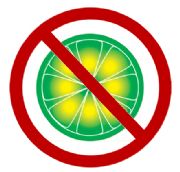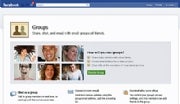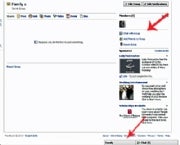How to clean up your Windows PC
Your Windows PC is slowing down. Maybe it takes longer to boot up or shut down. Perhaps the hard drive grinds in the background constantly. Or maybe launching an application takes much longer than it once did.
And although Windows 7 is speedier than previous versions, it can still become sluggish, particularly if you install and uninstall a lot of applications.
Over the next few pages we'll look at what it takes to clean the junk from your system and get rid of the detritus that has built up over time. We'll specifically discuss boot times, hard drive issues and the mysterious Windows Registry. We'll also explain how you can help stave off potential future problems, not least by getting out of habits that are likely to lead you to create unnecessary files in the first place.
Mysterious PC slowdowns: the suspects
Sometimes a PC will start to crawl without warning and the reason isn't always obvious. Although the focus of this article is on cleaning and preventing operating-system gunk, we'll start by touch briefly on a few hardware problems that can cause sudden slowdowns.
Vanishing memory
If you built your system yourself, the Bios may on occasion reset itself without your knowledge. This can happen during a power failure, or if you shut down the system during the POST (power on, self test) process. During such a reset, the memory speeds may revert to something more conservative. You'll notice performance issues only when running memory-intensive programs.
Another possibility is that the apparent amount of memory might shrink. For example, on recent motherboards built with Intel's P55 and X58 chipsets, a heatsink that's too tightly mounted can bend memory circuit traces on the motherboard. The net result is that one memory module becomes invisible to the system, potentially reducing the amount of memory available to Windows by a third or a half. That hampers your system, particularly when applications and data are swapped to virtual memory on your hard drive.
Overheating
Modern Intel and AMD CPUs will automatically throttle down if they get too hot. This can happen if your system's CPU and case cooling fans become coated with dust and start slowing down. Make sure you check the system temperature in the Bios or using any utilities that may have been provided along with your motherboard.
Imminent hard drive failure
As hard drives begin to develop bad sectors, they try to copy data to safe sectors. Ordinarily this occurs rarely, but when a drive starts to fail, the behaviour could become more frequent. The net result is constant disk use – also described as disk thrashing - as the system attempts to find free, good sectors. If you suspect such activity, turn on the SMART feature in your PC's BIOS, which will pull diagnostic information from the drive and warn you if failure seems imminent
However fast your PC when you first buy it, over time its performance will only deteriorate. We look at how to undo the damage done by everyday computing use and claw back valuable disk space and processor cycles.
Windows entropy explained
Now let's move on to Windows itself. Windows slowdown has three main causes: the Windows Registry gets bigger, DLLs and other junk are needlessly duplicated, and hard drives become fragmented. On machines that have a lot of programs installed a lot of background services and applications can be running without your knowledge. This can also contribute to system slowdown.
These potential problems aren't mutually exclusive. The Registry can swell as you install more software, which in turn loads a lot of background tasks. Your hard drive may also fill up, making Windows auto-defragging harder. Let's look at these issues one at a time.
Windows Registry
You've got a lot of apps – essentially, this is what the Registry is. Windows maintains configuration settings, application install settings, and options in a database called the Windows Registry. As you install and uninstall applications or make changes to Windows, the Registry tends to grow larger and larger. For example, the Registry on my production PC, which has a ton of such 'apps' installed, is about 384MB – and that's just a backup.

As the Registry expands, applications and services that use it take longer to load. Searches conducted through the Registry by apps that may have written their data in multiple places also start to require more time. Some applications, such as security tools and certain media players (PowerDVD and the like), touch the data in a large number of locations.
The other culprit behind Registry bloat is incomplete uninstalls. Most users install or uninstall only a few applications per year, but some people (gamers and power users come to mind) tend to install and remove many programs.
Incomplete uninstalls leave residue in the Registry, which adds to its size. Windows 7 and its program uninstaller is much improved in this respect, but still not perfect.
As it turns out, however, Registry cleaners aren't really the answer. More on that later.
Application extras
When you install applications, sometimes they need various runtime modules to run.
See all those separately installed copies of the Microsoft Visual C++ redistributable? You really need only the latest version. If you're running the 64bit version, you might need two copies, one for 32bit (labelled 'x86') and one for 64bit (x64).
This is just one example of the kind of junk that can get installed on a system. It's hard to stop and track down, and determining whether removing it might break something is often difficult.
Unnecessary background services
The more items you install, the more the programs seem to install some kind of service in the background. Maybe that service will speed up an application launch. Maybe it's a Control Panel applet for a high-end gaming mouse. Either way, there's an awful lot of stuff in my system tray.
Do I really need Impulse Now running all the time? I use it only when I'm running a game downloaded from Stardock's Impulse digital-delivery system, or when I'm buying a game from there. I certainly don't need it. And I rarely use Microsoft OneNote, so that doesn't have to run either.
Hard drive issues
A machine's file system will become fragmented eventually. Windows 7 tries to minimise that by running the defragger in the background when the PC is idle. But if you frequently create and delete files (or use applications that create and delete files regularly), the file system is bound to become fragmented.
System performance issues can also crop up if the drive gets too full. If a drive is more than 90 percent full, swapping from main memory to the drive becomes very slow, which can drag down the system as a whole. It may be time to clean out your drive – or to buy a bigger one.
Incomplete uninstalls
The Windows uninstaller (and similar uninstall apps that ship with some software) doesn't always completely remove an application. This shortcoming causes the Registry to balloon, leaves extraneous files on the hard drive, and otherwise cruds up a system.
However fast your PC when you first buy it, over time its performance will only deteriorate. We look at how to undo the damage done by everyday computing use and claw back valuable disk space and processor cycles.
Diagnostic tools: tracking down the junk
You'll need some tools to help you unearth the excess files and other detritus clogging up your system. Here are a few.
Benchmarks
Benchmarks help you determine your system performance. It's worth running a systemwide benchmark, such as PC WorldBench (which we use to measure the real-world performance of PCs and laptops that enter our Test Centre) or PCMark Vantage, when you first build or buy your system. Save the results, then run the benchmarks again every few months. If the results decrease by more than about 10 percent, you may want to clean out your PC.
Useful widgets
Windows comes with tiny applets known as gadgets that you can keep on your desktop. However, if you have too many gadgets running, they may slow down the system. One useful gadget is the CPU meter – not so much for its CPU-activity reports, but for its memory meter. If the percentage of memory used over time seems to increase substantially, you may have background tasks loading that you don't need.
You might also want to grab some third-party system-monitoring gadgets from
Microsoft's site.
Windows Resource Monitor
Gadgets are fun, but you'll probably find the Windows Resource monitor more practical for diagnosing potential issues. It's a substantial step up from the CPU-meter gadget and superior to the more commonly used Task Manager. You run Resource Monitor by clicking Start, Run, typing resmon, and then pressing the Enter key.
Check your PC memory usage
For monitoring system slowdown issues, there's always the actual system-performance monitor. Perhaps more useful than consulting this is the memory monitor.

This tracks memory usage. It even shows you, in a more granular fashion than Task Manager, how a particular program or service is consuming memory.
Windows Reliability Monitor
All those memory-hogging and performance-sapping modules can make your system less stable, so check the Windows Reliability Monitor, too. You may think your system is less stable than it once was, but the Reliability Monitor will give you the data to confirm that suspicion.
 Do a reliability check
Do a reliability check
You can use the Action Center to check your PC's reliability history. Launch the Reliability Monitor from the Windows Control Panel. Click on the System and Security link, then select Action Center. You'll see a heading labelled Maintenance. Click on that and you'll see the link for View Reliability History.
To navigate the Reliability Monitor click on the columns representing dates. You can also see the trendline, which may be flat or downward-sloping. (On our PC the sharp drop around 9/16 in the screenshot shown here represents when we installed the Internet Explorer 9 beta. Pre-release apps often have reliability problems - no surprise there.)
This is a graph of a system's reliability history.

A sudden, sharp drop is worth checking out. If multiple programs are shown to be unstable, perhaps something you installed (or uninstalled) just before stability problems occurred is the culprit.
System boot diagnostics
It's amazing how many applications, tools and utilities attempt to preload something or another during the boot-up process. We used to have a high-performance Windows XP desktop system that would take 15 minutes before the mouse would become responsive.
Windows 7 has fixed many slow-boot problems, but we've still seen supposedly high-end systems take nearly five minutes to fully boot up.
One third-party program that's useful for assessing boot problems is
Soluto. This is both a diagnostic program and a utility that can fix slow-boot issues.
However fast your PC when you first buy it, over time its performance will only deteriorate. We look at how to undo the damage done by everyday computing use and claw back valuable disk space and processor cycles.
More cleanup options
You can, of course, manually clean out a lot of the junk on your system. Here are some ways to tackle the job.
Disk Cleanup
The past few versions of Windows have shipped with the Disk Cleanup utility, which you can launch by clicking Start, All Programs, Accessories, System Tools, Disk Cleanup. When we used this tool on our test machine, we discovered 16.3GB of temporary converted audio files.

You can manually clean out old system files, but that can be perilous, so delete such files with care. Note too that Disk Cleanup allows you (under the More Options tab) to delete all but the most recent System Restore and Shadow Copy files. We recommend avoiding this though: you never know if you'll need an older restore point to get a usable machine back if you run into problems.
Defrag your drive
Defragmenting your hard drive is useful after you've performed a sweep with Disk Cleanup. During the defrag process, your system performance will slow down, since the defragger keeps the hard drives pretty busy. The Windows 7 defrag utility is somewhat smart about this, but your PC will still be less responsive during the process; it's best to run the utility when you don't need timely system access.
System Configuration Utility
This tool is more commonly referred to as Msconfig. You launch it by typing msconfig in the Start, Run bar. You can selectively enable and disable background services in Msconfig. Using Msconfig lets you manually specify services to run, as well as startup applications. It's far from perfect, however. It doesn't give you any advice as to what services can be safely disabled, though you can hide Windows services, which makes the Services tab a little more manageable.

This is all the stuff that launches on boot. The Startup tab is more useful. The caution here, though, is that if you disable everything willy-nilly, some of your applications (such as your antivirus software) may not work. Still, items such as the QuickTime Helper app and the Adobe Acrobat helper can be safely disabled.
 Registry Editor
Registry Editor
Use the Windows Registry Editor, aka 'regedit', with caution. You could easily delete keys from the Registry permanently and thereby render your system unusable. A less serious risk is that you could make applications unusable, then have to reinstall them. We've also had tales of woe from readers who have found a partial Registry edit makes it impossible to uninstall or reinstall an application but the program won't run. If you're going to edit the Registry yourself, back it up first.

Edit your system's Registry at your own risk. This screenshot of the Registry Editor shows only the first-level view; on lower levels the typical Registry contains many thousands of entries, often with arcane names such as HKEY_LOCAL_MACHINE\SOFTWARE\{9F5FBC24-EFE2-4f90-B498-EC0FB7D47D15}. Understanding what to delete and what to keep can be fraught with peril.
If you're trying to root out Registry entries for an incompletely uninstalled piece of software, the editor does allow you to search. If you do this, be very specific with the search string. The application name is much better than, say, the company name. Searching for Zune, for instance [does this work for a UK readership?], will probably yield much safer results than searching for Microsoft.
Useful third-party choices
Although you'll find plenty of useful third-party tools out there, don't go near anything called a 'Registry-cleaning tool'. The Windows Registry is an insanely complex database and no Registry cleaner can know every Registry key that an application may touch. We've had to help users who have run Registry cleaners that have rendered their applications unusable and unable to reinstall. That said, some Registry-related tools are useful.
Soluto
Soluto's main claim to fame is that it can shorten the time Windows takes to boot, sometimes by a substantial amount. You can download Soluto for free from
soluto's website.
If you have a lot of startup apps, Soluto can help.The utility contains a database of known boot applications, and gives you advice on whether they're safe to remove from the bootup process. But Soluto doesn't just put boot items into 'run' and 'don't run' categories; it can also defer certain items that you may want to run at Startup but can afford to run a little after the desktop becomes responsive.

Soluto will show you just how much time you can save when booting up. The program depends on users to help develop the database of items that are safe to delay or pause. One malicious person's vote won't count for much, so it's not as if you'll see Soluto recommend that you pause an essential Windows service. By the same token, if you have as many items loading as we often do, you'll see a lot of entries for which Soluto doesn't have any advice to give.
 Revo Uninstaller Pro
Revo Uninstaller Pro
This handy utility is a little more complex than Soluto.
Revo Uninstaller tries to be a more complete uninstaller. It generally works pretty well for that purpose. It also has an autorun (Startup) manager, but Soluto is probably better for that task. Similarly, Revo Uninstaller can act as a backup manager, browser cleaner and evidence remover, but I'll focus here on its main use.

Revo Uninstaller lets you purge every last trace of an old app.From a user perspective, Revo Uninstaller behaves pretty much the same way as the Windows uninstaller does. You just double-click on what you need to remove. Revo gives you the option of a safe, moderate, or advanced uninstall. After the process, you can scan for leftover files or Registry items specific to the application.
For uninstalling one or two apps, you can download Revo Uninstaller for free, but the full version costs $40 (£25) for a single licence or $80 (£50) for four computers. Revo Uninstaller helped us with a pesky iTunes 10 installation problem but we still experienced errors that prevented iTunes from completely installing. Revo Uninstaller managed to remove all the Apple residue and a complete iTunes install was possible after that.
Maintaining a clean system
Once you've cleaned out the crud, how do you keep your Windows system relatively clean? Here are several pointers.
If an application has an 'advanced' install option, use it. Go ahead and install to the default locations (if you want), but check what's being installed. Sometimes you'll have the option of telling the program not to run anything at system startup.
Always watch the installer dialog box. Many users merely click the Next button every time the application's installer prompts them to do so. But often the window will have checkboxes that install additional items, such as browser toolbars, quick startup utilities, or other junk.
If a window pops up in your browser asking you to install something, make sure you know what it is. It may just be a simple tool to help your browsing, or it may install something that runs at startup and saps your system resources. (Weatherbug, anyone?) In the worst-case scenario, it will install malware.
Use tools such as Soluto and Msconfig frequently to make sure useless junk isn't running at startup.
Clean your drive frequently, particularly temporary internet and temporary installation files.
It takes only a few minutes a week to keep your system relatively clean, and if you do that, you should be able to postpone the dreaded reformat and reinstall for a very long time.
published by pcadvisor
uploaded by
Niall Mulrine
Pc Clean
Navenny, Ballybofey, Co. Donegal, Ireland
www.pcclean.ie
sales@pcclean.ie
tel: 086-2377033
 File-sharing program LimeWire has been permanently shut down after a federal judge found it guilty of assisting users in committing copyright infringement "on a massive scale."
File-sharing program LimeWire has been permanently shut down after a federal judge found it guilty of assisting users in committing copyright infringement "on a massive scale." During the court proceedings, the plaintiffs claimed that over 93 percent of the software's traffic was made up of infringing content.
During the court proceedings, the plaintiffs claimed that over 93 percent of the software's traffic was made up of infringing content.



















